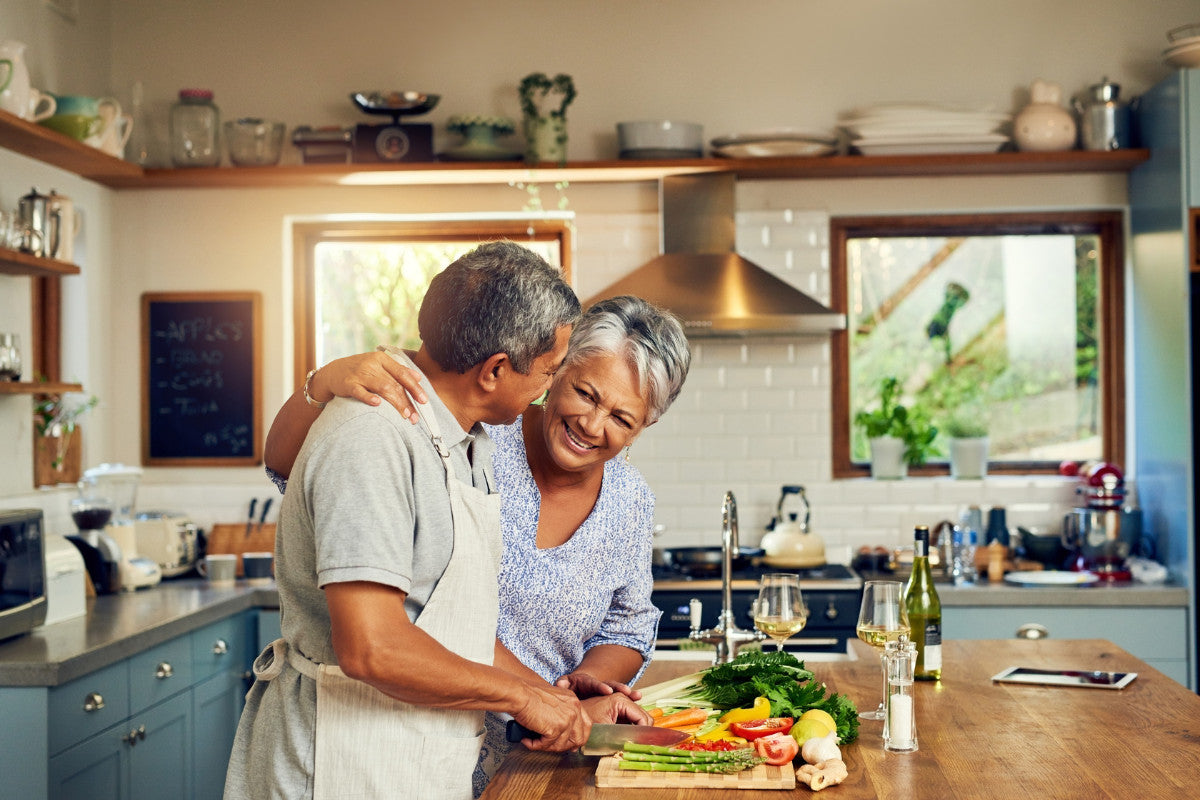Your Cart is Empty
FREE SHIPPING OVER $45 & RETURNLESS REFUNDS

I want to talk about something close to my heart—and probably yours, too—cooking. Because let’s be honest, for many of us, it’s not just about feeding ourselves or others. It’s therapy, creativity, and a little daily joy, especially in these summer months when fresh ingredients are plentiful and the days feel longer.
But if you’re living with sciatica, standing in the kitchen can sometimes feel like a challenge. I know this well. Some days, just chopping veggies or standing over the stove makes my back tighten up or sends that familiar zing down my leg.
Here’s what I’ve learned about making cooking work for me—and how you can enjoy your passion for food without letting sciatica steal your joy.
Cooking involves a lot of standing, reaching, bending, and lifting—exactly the movements that can aggravate sciatic nerves. Plus, those sharp or burning sensations can sneak up during long prep sessions, turning what should be relaxing into a race against discomfort.
But here’s the twist: Cooking can also be a healing ritual. It connects us with our bodies, gives us a creative outlet, and nourishes us both physically and emotionally. The key is learning how to manage your pain so you can keep cooking without paying for it later.
Set Up Your Kitchen Like a Pro
I keep a sturdy stool nearby so I can sit while chopping or while I'm waiting for water to boil. Pro tip:Organize your frequently used tools and ingredients at waist or eye level to avoid unnecessary bending.
Take Mini Breaks—Stretch and Breathe
Every 15 minutes, I stop for a simple stretch or deep breath. It sounds small, but it helps me reset and keeps tight muscles from locking up.
Use Time-Saving Tools
Slow cookers are my best friend during flare-ups. Toss in ingredients, set it, and go enjoy your afternoon without standing over the stove. Electric can openers and lightweight cookware reduce strain, too.
Plan One-Pot or Batch Meals
I try to plan dishes that don’t require constant attention, like stews or sheet-pan dinners. Batch cooking lets me enjoy a home-cooked meal even on days when pain makes cooking tough.
Add Anti-Inflammatory Ingredients
Turmeric, ginger, leafy greens, fatty fish—these aren’t just trendy; they’re backed by science to help calm inflammation. I’ve started incorporating them more consciously, and I genuinely feel the difference.
Here’s one of my go-to dishes on tough days: chicken thighs, baby potatoes, cherry tomatoes, garlic, and green beans—all tossed in olive oil, lemon juice, and herbs, then roasted together. Minimal prep, maximum flavor, and easy clean-up. Give it a try next time your sciatica acts up!
After I finish cooking—especially on days when the chopping, stirring, and standing catch up with me—I reach for our Outback Oil. A few pumps, rubbed into my lower back and legs, helps ease the tension before it turns into something worse.
It’s not just for recovery, either. I’ve started using it before long cooking sessions as a little preventative care. Think of it like prepping your body the same way you prep your ingredients—because the better care you take, the better the results.
I’d love to hear from you:
What’s your favorite meal to cook when pain strikes?
Do you have any kitchen hacks or gadgets that help you keep cooking comfortably?
Ever tried using topical relief or massage after cooking?
Drop a comment — your tips might just help someone else in our community!
Here’s to many more delicious, comfortable meals ahead!
Mark